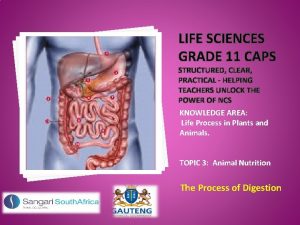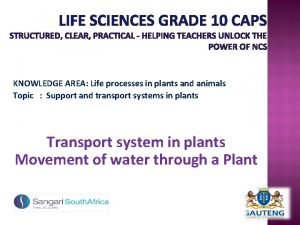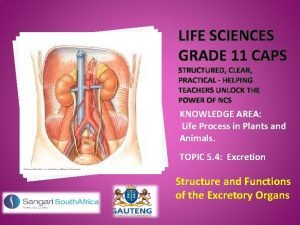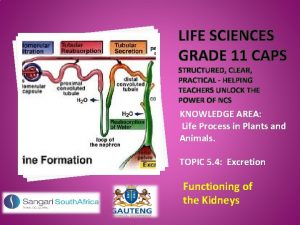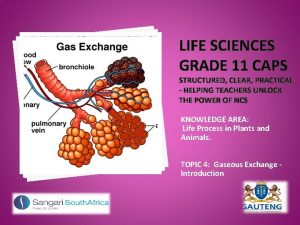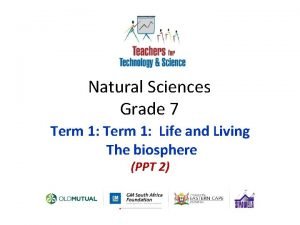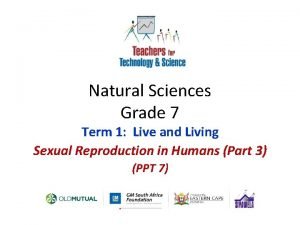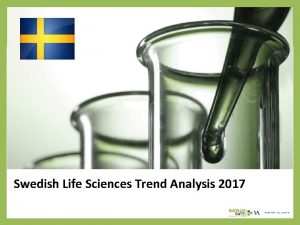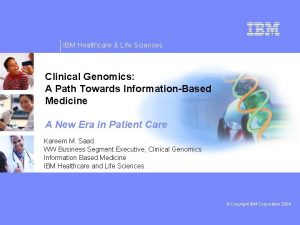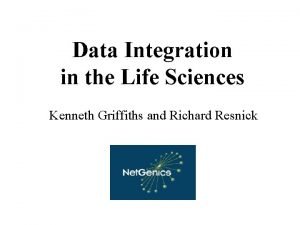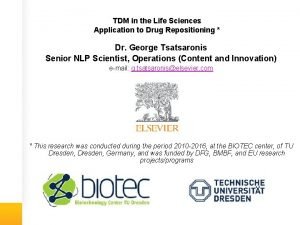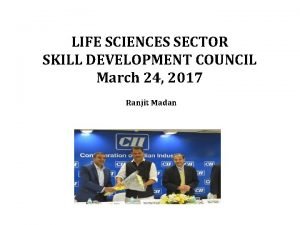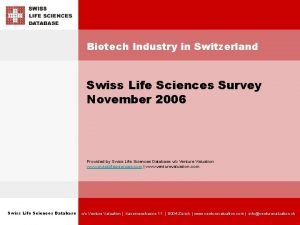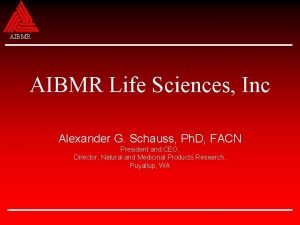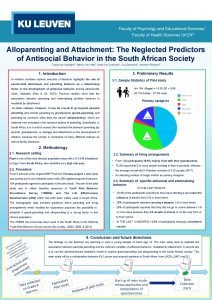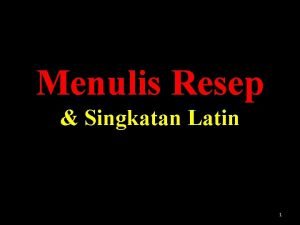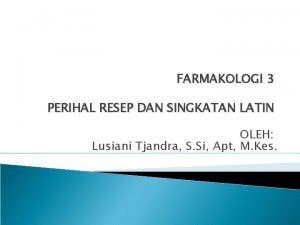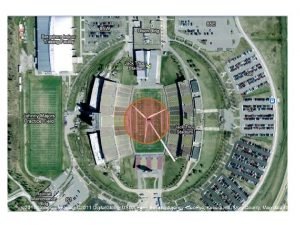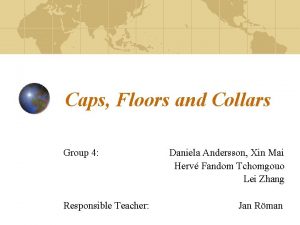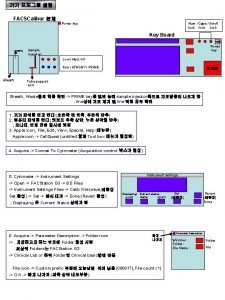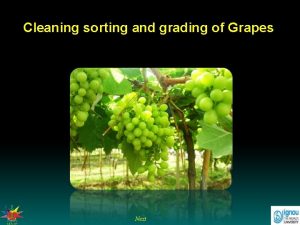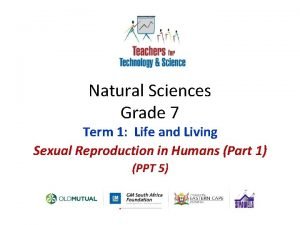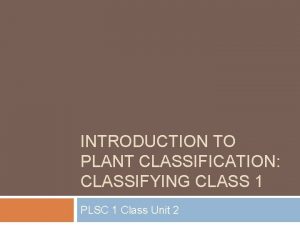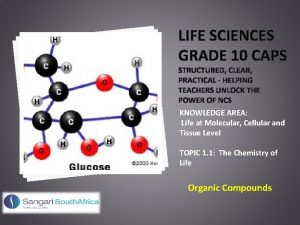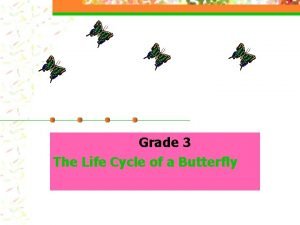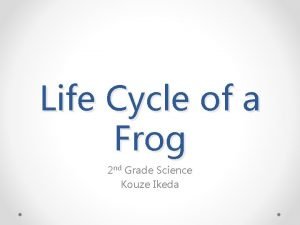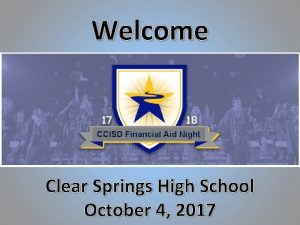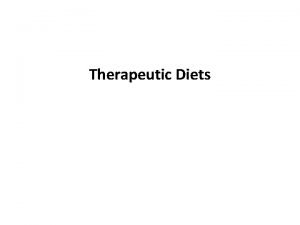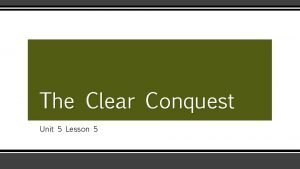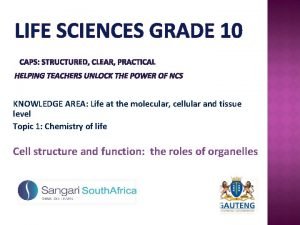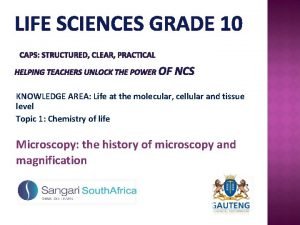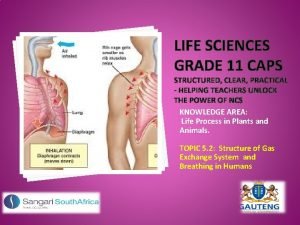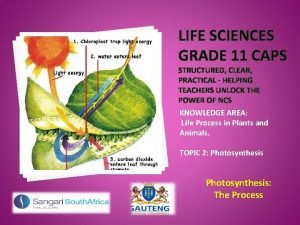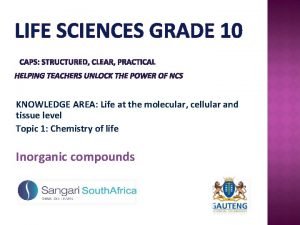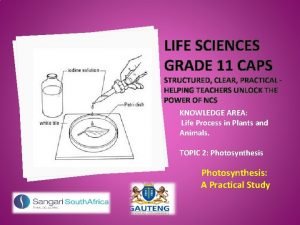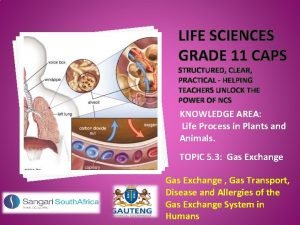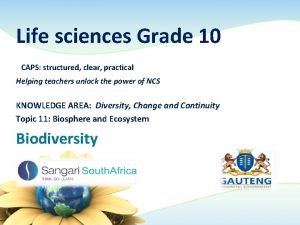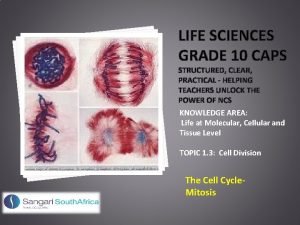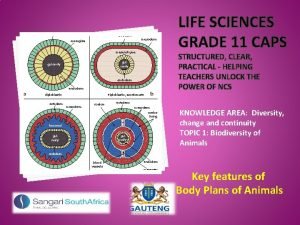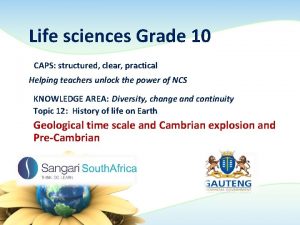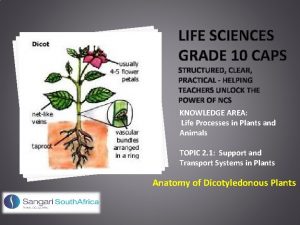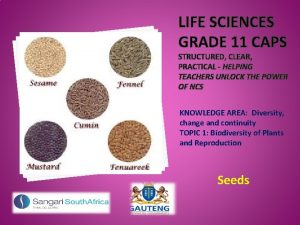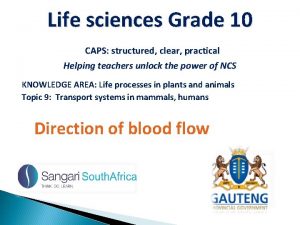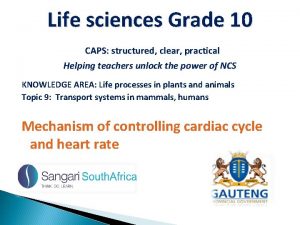LIFE SCIENCES GRADE 11 CAPS STRUCTURED CLEAR PRACTICAL





























































































- Slides: 93

LIFE SCIENCES GRADE 11 CAPS STRUCTURED, CLEAR, PRACTICAL - HELPING TEACHERS UNLOCK THE POWER OF NCS KNOWLEDGE AREA: Diversity, change and continuity TOPIC 1: Biodiversity of Plants and Reproduction Orchids Biodiversity of Plants

SUMMARY OF PRESENTATION Introduction to Plant Kingdom The Bryophytes The Pteridophytes The Gymnosperms The Angiosperms The Progressive Development of Land Plants

INTRODUCTION TO PLANT KINGDOM � All the plants in the plant kingdom maybe grouped into vascular and non-vascular plants. � Vascular plants are those with conducting tissue. � Non-vascular plants are those that do not have conducting tissue. � Do you remember that conducting tissue are xylem and phloem? � Some examples of non-vascular plants are mosses, liverworts and hornworts.

INTRODUCTION TO PLANT KINGDOM � These plants belong to the Phylum Bryophyta.

INTRODUCTION TO PLANT KINGDOM � The vascular plants may be further divided into those that bear seeds and those that do not. � An example of seedless plants are the ferns. � Pine tree and flowering plants are examples of seedbearing plants.

INTRODUCTION TO PLANT KINGDOM � The ferns belong to the Phylum Pteridophyta. � While the pine plant belongs to the Phylum Gymnosperm and the flowering plants belong to the Phylum Angiosperm. � All plants have a lifecycle that is made up of 2 generations. � These 1. 2. � 2 generations are the: Gametophyte Sporophyte These generations alternate with each other.

INTRODUCTION TO PLANT KINGDOM � One generation gives rise to the other. � You will learn more about this in grade 12.

THE BRYOPHYTES � This group is made up of 3 large groups. � They are the: a. Mosses b. Liverworts c. Hornworts � All these are terrestrial plants. � They grow in damp, shady ground. � The liverworts and hornworts are because of their shapes. liverwort hornwort

THE BRYOPHYTES � The most well known bryophyte is the moss. � In the bryophytes the dominant generation is the gametophyte. � The gametophyte is dominant because it lives longer and is larger than the sporophyte generation. The moss showing the 2 generations

THE BRYOPHYTES - CHARACTERISTICS � The plant has root-like structures called rhizoids. � The rhizoids anchor the plant to the ground. � The moss also has stemlike and leaf-like structures. the moss has no true roots, stems and leaves it is called a thallus. � Since Moss-gametophyte

THE BRYOPHYTES - CHARACTERISTICS moss also lacks xylem and phloem. � Therefore we say it lacks conducting tissue. � They reproduce using spores and have no seeds. � These spores occur in spore bearing capsules, therefore the moss has no fruits. � The Moss showing the sporophyte Spore bearing capsule

THE BRYOPHYTES - CHARACTERISTICS � The male and female reproductive organs are found on different branches of the same plant. � The sperms have to move from the male reproductive organs to the female reproductive organs. � The sperms swim to reach the egg in the female reproductive organ. � The sperms swim in a film of water to reach the egg. � Therefore we say that the moss is dependent on water for reproduction.

THE BRYOPHYTES - CHARACTERISTICS � During asexual reproduction spores are produced. � These spores are dispersed by wind. moss is dependent on dry weather for the release and dispersal of spores. � The

THE PTERIDOPHYTES � This phylum includes the ferns, horsetails and whisk ferns. fern Horsetail fern Whisk fern

THE PTERIDOPHYTES CHARACTERISTICS � These plants have vascular tissue. � They also have supporting tissue. � They therefore have true roots, stems and leaves. � The Pteridophytes are not thallus plants. reproduce using spores, they do not produce seeds. � Spores are made and stored in spore bearing capsules. � They do not have fruits.

THE PTERIDOPHYTES CHARACTERISTICS � They undergo both sexual and asexual reproduction. � The sperms need to swim to reach the egg in the female reproductive organ. � The sperm swims in water. � Therefore the pteridophytes depend on water for sexual reproduction. � During asexual reproduction spores are produced. � These spores depend on dry weather for their release and dispersal.

THE PTERIDOPHYTES CHARACTERISTICS � The dominant generation is the sporophyte generation. � The sporophyte generation is dominant because it is able to stay alive and produce spores for many cycles. � The gametophyte generation dies after just one cycle of gamete formation and fertilization.

SOMETHING FOR YOU TO DO 1. 2. Explain how the pteridophyte is more advanced than the bryophyte. Explain how the bryophyte and the pteridophyte are the same.

SOLUTION: 1. 2. The pteridophyte has true roots, stems and leaves. They are not thallus plants. They have conducting and supporting tissue. Therefore they can grow taller. Both the bryophyte and pteridophyte depend on water for sexual reproduction. They both depend on dry weather for spore release and dispersal. They both do not produce seeds and fruit. They produce spores.

THE SPERMATOPHYTES � All plants that bear seeds belong to the phylum Spermatophyta. plants maybe separated into 2 groups, those that bear naked seeds and those whose seeds occur within fruit. � The plants that produce naked seeds belong to the group Gymnosperms. � The plants that produce seeds within fruits belong to the group Angiosperms. � These

THE GYMNOSPERMS � There are 4 groups of Gymnosperms. � These 4 groups are: 1. Conifers 2. Cycads 3. Gnetophytes 4. Ginkgophytes

THE GYMNOSPERMS 1. � � The Conifers: These are cone bearing plants. They are made up of about 600 different species. This makes them the biggest group of gymnosperms. Some examples are pine trees, yellow woods, red woods and firs. A selection of Conifers

THE GYMNOSPERMS 2. � � The Cycads: They form the second largest group of gymnosperms. They are made up of 130 extant species. Extant means that the organism is not extinct. There were a much larger population of cycads but many of them became extinct. Cycads

THE GYMNOSPERMS 3. � � � The Gnetophytes: This group is very small. It is made up of only 3 genera. (Genera is plural of genus) One example is the Welwitschia mirabilis, that is found in the Namib Desert. Welwitschia mirabilis

THE GYMNOSPERMS 4. � � � The Ginkgophytes: This group is made up of only one species. This species is called the Ginkgo biloba. The Ginkgo biloba is commonly known as the maidenhair tree. Maidenhair tree

THE GYMNOSPERMS CHARACTERISTICS � These plants have conducting tissue, therefore water and manufactured food can be transported to all parts of the plant. � They also have supporting tissue, they have enough strength and support to allow them to grow to great lengths. � They have true roots, stems and leaves. � Therefore they are not thallus plants. � They undergo both sexual and asexual reproduction. � During sexual reproduction seeds are produced.

THE GYMNOSPERMS CHARACTERISTICS � These seeds are found on the cones. � They do not bear fruit. � They have spores, but they have both male and female spores. � These spores are inside the pollen grain and ovary. � They are not dependent on water for reproduction. � The male spores are carried to the female cone by the wind. � The pollen tube then carries the spores to the ovary.

THE GYMNOSPERMS CHARACTERISTICS � Two generations also occur in these plants. � The sporophyte generation is dominant. � The gametophyte generation is separated into a male gametophyte and a female gametophyte. � Both the male and female gametophyte generation occur within the sporophyte.

SOMETHING FOR YOU TO DO: 1. 2. Explain how the gymnosperms are similar to the pteridophytes. Explain how the gymnosperms are different from the pteridophytes.

SOLUTION: 1. q q q 2. q Similarities They both have xylem and phloem, therefore they are both vascular plants. They both have true roots, stems and leaves, therefore they are not thallus plants. Their sporophyte generation is dominant. Differences The gymnosperms are able to produce seeds, while the pteridophytes do not.

SOLUTION q The gymnosperm have separate male and female gametophytes, while the pteridophytes have only one gametophyte with both the male and female sex organs on the gametophyte.

ANGIOSPERMS

ANGIOSPERMS � These are terrestrial plants, that occur over a widespread area. � They are a very successful group of plants. � Some of them occur in very dry areas, these are called xerophytes. � Other angiosperms are found in areas that have an abundant water supply, these plants are called hydrophytes. � Then finally some of them live in areas of moderate water supply, such plants are called mesophytes.

ANGIOSPERMS � These plants also have both the sporophyte and gametophyte generations. � The sporophyte is the dominant generation. � Two separate gametophyte generations occur. � They are the male gametophyte and the female gametophyte. � Both these gametophyte generations occur in the sporophyte generation. � Lets discuss the sporophyte generation now.

ANGIOSPERMS - ROOTS STRUCTURE: � The sporophyte generation is the flowering plant. � It is made up of roots, stems leaves and flowers. � Two types of roots systems may occur. � These are the tap root system or the adventitious root system. � The tap root system has one main root and several side roots. � The tap roots arise from the radicale of the seed. � They occur in dicotyledonus plants.

ANGIOSPERMS - ROOTS � The tap root system has one main root and several side roots. � The tap roots arise from the radical of the seed. � They occur in dicotyledonous plants.

ANGIOSPERM - ROOTS � The adventitious root is made up of a number of roots that are more or less the same size. is no main root. � The adventitious root arises from any part of the plant but the radical. � They occur in monocotyledonous plants. � There

ANGIOSPERM - ROOTS FUNCTIONS � Roots have 2 functions. � They are: 1. They anchor the plant firmly to the ground. 2. They absorb water and mineral salts.

SOMETHING FOR YOU TO DO: Tabulate two differences between the tap root and adventitious root system.

SOLUTION � Differences root system between tap root and adventitious TAP ROOT ADVENTITIOUS ROOT Has a single main root with side roots. No main root. All roots are more or less the same size Arises from the radical of the seed Arises from any other part of the plant, but not the radical of the seed Common in dicot plants Common in monocot plants

ANGIOSPERM - STEMS � These stems are erect structures. � They are found above the ground. � They bear leaves and flowers. � The portion of the stem from which the leaf and sometimes flowers arises is called the node. � The part between two nodes is called the internodes.

ANGIOSPERM - STEMS � These stems have conducting tissue. � They can also be quite tall and therefore the have well developed supporting and strengthening tissue. � The strengthening tissue maybe collenchyma or sclerenchyma. FUNCTION � The stem holds the flower in a perfect position for pollination. � The stem holds the leaves in a perfect position to receive sunlight.

ANGIOSPERM - STEMS � The stem also transports water and mineral salts from the roots to the leaves. � They also transport manufactured food from the leaves to all parts of the plant. � Therefore it has well developed xylem and phloem.

SOMETHING FOR YOU TO DO � Explain how the stem is adapted for its functions.

SOLUTION � It has strengthening and supporting tissue to hold the leaves and flowers in a perfect position to receive sunlight and for pollination. � It has xylem and phloem to transport food and water throughout the plant.

ANGIOSPERM - LEAVES STRUCTURE: � The leaves are green in colour. � They can be broad and flat as in the dicot leaf or long and narrow in the monocot leaf. � Dicot leaves have net venation while monocot leaves have parallel venation. Monocot leaf Dicot leaf

ANGIOSPERM - LEAVES � They arise from the node of the stem. � In the dicot plant the are attached to the stem by means of a petiole. � The monocot leaves are attached directly to the stem. � Therefore they are called sessile leaves.

SOMETHING FOR YOU TO DO � Tabulate leaves. differences between monocot and dicot

SOLUTION � Differences between monocotyledonous leaves and dicotyledonous leaves. Monocot Dicot 1. Leaves broad and flat 1. Leaves long and narrow. 2. Attached to stem by 2. Attached directly to the petiole. the stem. 3. Net venation. 3. Parallel venation.

ANGIOSPERM - LEAVES FUNCTION: � Leaves trap sunlight for photosynthesis. � Photosynthesis occurs in the leaves.

SOMETHING FOR YOU TO DO Explain how the leaf is adapted for its function.

SOLUTION � The broad flat shape of the leaf offers a large surface area to allow for the maximum absorption of sunlight. � Leaves have pigment chlorophyll to trap sunlight for photosynthesis. � They have xylem to transport water to the leaf for photosynthesis. � They have phloem to transport the manufactured food to all parts of the plant. � They have stomata for gaseous exchange. � They are covered by a cuticle to reduce water loss by transpiration.

ANGIOSPERM - FLOWER � The flower is the reproductive organ of the plant. � The male and female gametophyte are found in the flower. � The male and female gametes are found within the male and female gametophyte.

ANGIOSPERM - FLOWER � The dicot flower is made up of 4 parts. � These are the calyx, corolla, androecium and gynaenium. Dicot Flower

ANGIOSPERM - FLOWER � In the monocot flower the calyx and corolla is fused to form the perianth. Monocot Flower

ANGIOSPERM - CHARACTERISTICS � All 1. 2. 3. 4. 5. 6. angiosperms have the following characteristics: They have true roots, stems and leaves. They have vascular tissue. They bear seeds that occur within fruits. They also have separate male and female spores. Male spores are found within the pollen grain while female spores are found within the ovules. Some spores many need water for spore dispersal.

ANGIOSPERM - CHARACTERISTICS 7. 8. 9. 10. They do not depend on water for sexual reproduction. Insects and animals are used as pollinating agents. They have a dominate sporophyte generation. Separate male and female gametophyte generations occur within the sporopyhte generation.

PROGRESSIVE DEVELOPMENT OF LAND PLANTS � The 1. 2. 3. land plants progressed in the following areas: Increase in the size of Plants The increasing size of the Sporophyte and the decreasing size of the Gametophyte. Decreasing Dependence on Water for Sexual Reproduction.

PROGRESSIVE DEVELOPMENT OF LAND PLANTS 1. � � � Increase in the size of Plants: We started with the bryophytes. They were very small. This is because they do not have any conducting tissue, which will be needed to transport water to all parts of the plant, even if it very big and tall. Then we studied the pteridiophytes, they are much larger, some of them can even grow into tall trees. They are able to grow taller than the bryophytes because they have conducting tissues. The gymnosperms and angiosperms are much taller because they have well developed conducting tissue that will be able to transport substances to the tips of the plant.

PROGRESSIVE DEVELOPMENT OF LAND PLANTS 2. � � The Increasing size of the Sporophyte and the Decreasing size of the Gametophyte. In bryophytes the gametophyte is the dominant generation. The sporophyte grows on the gametophyte and is semi-parasitic on the gametophyte generation. In pteridophytes, the sporophyte is dominant. The gametophyte generation is separate, and is very small.

PROGRESSIVE DEVELOPMENT OF LAND PLANTS � In the gymnosperm and angiosperm, the sporophyte generation is dominant. Separate male and female gametophytes occur. The gametophytes are enclosed and protected by a much larger sporophyte generation. 3. Decreasing Dependence on Water for Sexual Reproduction. In both the bryophytes and pteridophytes the sperms need a film of water in which to swim and reach the egg and for fertilization to take place. �

PROGRESSIVE DEVELOPMENT OF LAND PLANTS � The gymnosperms and angiosperms are not dependent on water for reproduction. � Pollen grains are carried from one plant to another by pollinating agents or the wind. � This process is called pollination. � Pollination is the transfer of pollen grains from one plant to another. � The pollen tube is responsible for carrying the sperm to the egg, so that fertilization may occur.

PROGRESSIVE DEVELOPMENT OF LAND PLANTS � The study of the development of land plants seems to point to the idea that the plants arose from a common ancestor. � It also points to evolutionary relationships. � These evolutionary relationships can be shown by using special diagrams. � The diagrams are called phylogenetic trees. � On example of a phylogenetic tree is a cladogram. � Your teacher will now show and explain one example of a cladogram to you.

SOMETHING EXTRA: Phylogentic Trees: �A phylogentic tree shows the evolutionary relationships amongst different species. � It also represents a hypothesis about the history of a certain group of organisms. � This history mentioned above is based on a set of characteristics.

SOMETHING EXTRA: �A phylogentic tree may look like either of the diagrams shown alongside. � Now lets look at what information these trees show us… Some phylogentic trees

SOMETHING EXTRA: Lets start with A. � A is called the ancestral stock. � It is found at the base of the phylogentic tree. � All the taxonomic groups on this tree arose from this A ancestor. Phylogentic Tree

SOMETHING EXTRA: Now lets look at B � B is called the point of divergence. � It is the point where a new species evolved from the ancestral stock. � This new species can be the ancestor of a new B taxonomic group. � We must remember that the ancestral stock continues to exist, but Ancestral stock it can undergo Phylogentic Tree evolutionary change.

SOMETHING EXTRA: Now lets move onto C. � C shows the formation of a new species. � This is where C diverges leading to the formation of a new species 1 and 2. � We can see that the tree also shows close relationships. � For example 1 and 2 are closely related because they are twigs of the same branch. � While 3 is on a separate branch therefore not closely related to 1 and 2. 1 2 3 C Ancestral stock Phylogentic Tree

SOMETHING EXTRA: Finally lets look at D. � D shows that the ancestral stock continues to exist but has undergone evolutionary change and diversified to become phylum 4. 4 D Ancestral stock Phylogentic Tree

TERMINOLOGY: � Vascular plants: are those with conducting tissue. � Non-vascular plants: are those that do not have conducting tissue. � Conducting tissue: are tissue that transport water and mineral salts and manufactured food throughout the plant. � Thallus: is a plant that does not have true roots, stems and leaves. � Dominant generation: is the one that is alive for more than one reproductive cycle. � Genera: is plural of genus � Extant: means that the organism is not extinct.

TERMINOLOGY: � Xerophytes: are plants that occur in very dry areas. � Hydrophytes: are plants that are found in areas that have an abundant water supply. � Mesophytes: are plants that live in areas of moderate water supply. � Radical: is the first root that develops from the embryo of a plant found within the seed. � Adventitious root system: a roots system in which all the roots are more or less the same size. � Tap root system: made of one main root and several smaller roots.

TERMINOLOGY: � Petiole: is a small stem-like structure that attaches the leaf to the stem. � Sessile: these are leaves that are attached directly to the stem, they do not have petioles. � Pollination: is the transfer of pollen grains from one plant to another. � Phylogenetic trees: are special diagrams that are used to show evolutionary relationships.

QUESTION 1 The diagram used to study evolutionary relationships is called the… A. Cladogram B. Gametophyte C. Sporophyte D. Prothallus

QUESTION 2 The dominant generation in mosses is… A. Cladogram B. Gametophyte C. Sporophyte D. Prothallus

QUESTION 3 The angiosperms are able to grow so tall because… A. They have well developed conducting tissue. B. They use diffusion for transport. C. They do not have any conducting tissue. D. They have a very well developed root system.

QUESTION 4 The plants that are dependent on water for fertilization is… A. Ferns B. Moss C. Both A and B D. A only

QUESTION 5 The plants that are independent of water for reproduction is… A. Moss B. Fern C. Bryophytes D. Angiosperms

QUESTION 6 The gymnosperms do not need water for reproduction because… A. They have pollen tube to carry sperms to the egg. B. Pollen grains are dispersed by wind. C. They do not bear spores. D. Both A and B.

QUESTION 7 The gametophytes are separate and are found within the sporophytes in… A. Bryophytes B. Pteridophytes C. Gymnosperms D. None of the above

QUESTION 8 The calyx and corolla of the monocot plant is fused to form the… A. Perianth B. Petiole C. Pollen D. Pollen tube

QUESTION 9 The petiole is used to attach… A. The leaf to the stem B. The flower to the stem C. The cone to the stem D. The root to the stem

QUESTION 10 Leaves that do not have petioles are called… A. Dominant B. Sessile C. Perianth D. Dicot

QUESTION 11 The following are a list of characteristics of dicot plants… A. Sessile, net venation, separate calyx and corolla B. Sessile, parallel venation, perianth C. Petiole, net venation, perianth D. Petiole, net venation, separate calyx and corolla

QUESTION 12 The following are a list of characteristics of dicot plants… A. Sessile, net venation, separate calyx and corolla B. Sessile, parallel venation, perianth C. Petiole, net venation, perianth D. Petiole, net venation, separate calyx and corolla

QUESTION 13 The most successful of all land plants are… A. Bryophytes B. Pteridophytes C. Gymnosperms D. Angiosperms

QUESTION 14 Gymnosperms and angiosperms are similar because they… A. Are dependent on water for fertilization. B. Are independent of water for fertilization. C. Are dependent on water for pollination D. Are both bryophytes

QUESTION 15 The bryophytes are called thallus plants because they… A. Do not have true roots, stems and leaves. B. Do not have petioles. C. Are very tall plants. D. Need water for fertilization.

QUESTION 16 The leave arise from the… A. Nodes B. Internodes C. Petioles D. Auxiliary bud

QUESTION 17 Plants that are found in areas of abundant water supply are called… A. Mesophytes B. Xerophytes C. Hydrophytes D. Terrestrial

QUESTION 18 Plants that are found in areas of moderate water supply are called… A. Mesophytes B. Xerophytes C. Hydrophytes D. Terrestrial

QUESTION 19 Plants that are found in areas of limited water supply are called… A. Mesophytes B. Xerophytes C. Hydrophytes D. Terrestrial

QUESTION 20 Land plants are called… A. Mesophytes B. Xerophytes C. Aquatic D. Terrestrial

SOLUTION 1. 2. 3. 4. 5. 6. 7. 8. 9. 10. A B A C D D C A A B 11. 12. 13. 14. 15. 16. 17. 18. 19. 20. D B A A C A B D
 Grade 11 animal nutrition
Grade 11 animal nutrition The human sciences tok
The human sciences tok Unstructured interview
Unstructured interview Jackson structured design
Jackson structured design In march
In march Life science grade 11 kidney practical
Life science grade 11 kidney practical Life science grade 11 kidney practical
Life science grade 11 kidney practical Gaseous exchange practical grade 11
Gaseous exchange practical grade 11 Maps and plans maths lit grade 12
Maps and plans maths lit grade 12 Term 3 natural science grade 6
Term 3 natural science grade 6 Grade 7 term 4 natural science
Grade 7 term 4 natural science Grade 7 natural science term 4
Grade 7 natural science term 4 Term 3 natural science grade 7
Term 3 natural science grade 7 Grade 6 natural science term 4
Grade 6 natural science term 4 Natural science and technology grade 4 term 3
Natural science and technology grade 4 term 3 Animal nutrition grade 11 practical
Animal nutrition grade 11 practical Ns grade 7 term 2 notes
Ns grade 7 term 2 notes Natural science grade 7 term 1
Natural science grade 7 term 1 Swedish life sciences
Swedish life sciences Ibm healthcare and life sciences
Ibm healthcare and life sciences Data integration in the life sciences
Data integration in the life sciences Paralax life sciences
Paralax life sciences Colors life sciences
Colors life sciences Life sciences
Life sciences Cti life sciences fund
Cti life sciences fund Life science sector skill council
Life science sector skill council Ibm healthcare and life sciences
Ibm healthcare and life sciences Swiss life sciences
Swiss life sciences Meril life sciences
Meril life sciences Alexander g. schauss
Alexander g. schauss Life sciences universal data framework
Life sciences universal data framework Mcb 151 uiuc
Mcb 151 uiuc Psycholgy
Psycholgy Ctx life sciences pvt. ltd.
Ctx life sciences pvt. ltd. Real world application of polynomials
Real world application of polynomials Tipos de caps
Tipos de caps Sig e caps
Sig e caps Singkatan penulisan resep
Singkatan penulisan resep Sigecaps
Sigecaps Curriculum management hod management plan template
Curriculum management hod management plan template Sigecaps
Sigecaps Fiu caps
Fiu caps Bahasa latin dalam resep
Bahasa latin dalam resep Sigecaps
Sigecaps Orientation to intermediate phase mathematics
Orientation to intermediate phase mathematics History fet caps
History fet caps Caps 71-1
Caps 71-1 Spar cap
Spar cap Caps and floors
Caps and floors Abridged caps document
Abridged caps document Sigecaps questions
Sigecaps questions Get your thinking caps on
Get your thinking caps on Polar ice caps melting
Polar ice caps melting Zero cost collar
Zero cost collar Cerner hps
Cerner hps Radical days of the revolution
Radical days of the revolution Tena shampoo caps
Tena shampoo caps All caps
All caps Caps mcgill
Caps mcgill Caps topic
Caps topic ㄴㅊ개ㅣㅣㅣㄷㄱ.채ㅡ
ㄴㅊ개ㅣㅣㅣㄷㄱ.채ㅡ Scrubbing the hub vs curos caps
Scrubbing the hub vs curos caps What goes around the earth
What goes around the earth Enver paşa ermeniler
Enver paşa ermeniler Caps saude mental
Caps saude mental Q caps for menopur
Q caps for menopur Caps document intermediate phase
Caps document intermediate phase Microsoft office mcgill
Microsoft office mcgill Harald blaatand caps
Harald blaatand caps Initial and transmuted grade
Initial and transmuted grade First grade babies second grade tots
First grade babies second grade tots Difference between grade a and grade aa eggs
Difference between grade a and grade aa eggs Grades of milk
Grades of milk Grading of grapes
Grading of grapes Meta - change morph -
Meta - change morph - Substance abuse grade 7 life orientation
Substance abuse grade 7 life orientation Define democracy in life orientation
Define democracy in life orientation Grade 7 life orientation term 2 notes
Grade 7 life orientation term 2 notes Computer part of your life grade 11
Computer part of your life grade 11 Computers, part of your life grade 11 answers pdf
Computers, part of your life grade 11 answers pdf Life orientation grade 7 self image
Life orientation grade 7 self image Grade 7 term 1 natural science
Grade 7 term 1 natural science Pictures of seven life processes
Pictures of seven life processes Unhealthy roots
Unhealthy roots Organic compounds grade 10 life science
Organic compounds grade 10 life science Butterfly grade 3
Butterfly grade 3 Define social issues in life orientation
Define social issues in life orientation Life orientation grade 7 term 2 activities
Life orientation grade 7 term 2 activities Floglet
Floglet Clear springs naviance
Clear springs naviance Clear liquid diet foods
Clear liquid diet foods Clear perinatal quality
Clear perinatal quality The clear conquest
The clear conquest Last clear chance doctrine
Last clear chance doctrine
